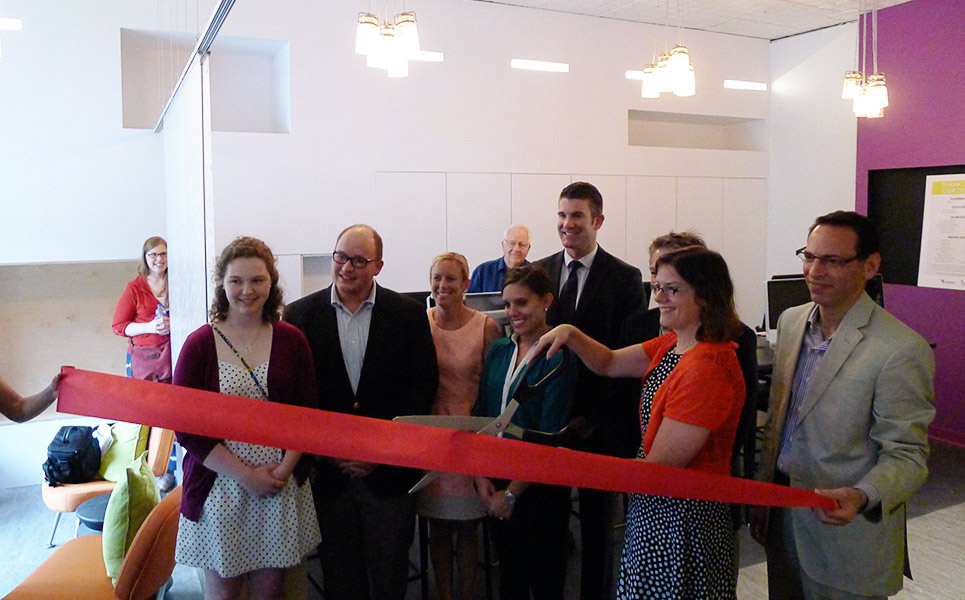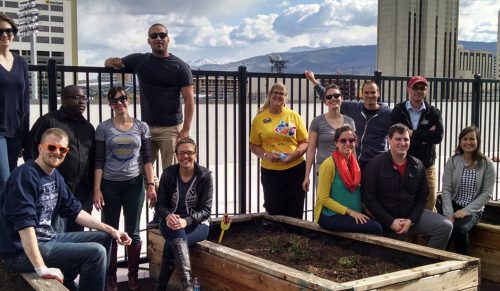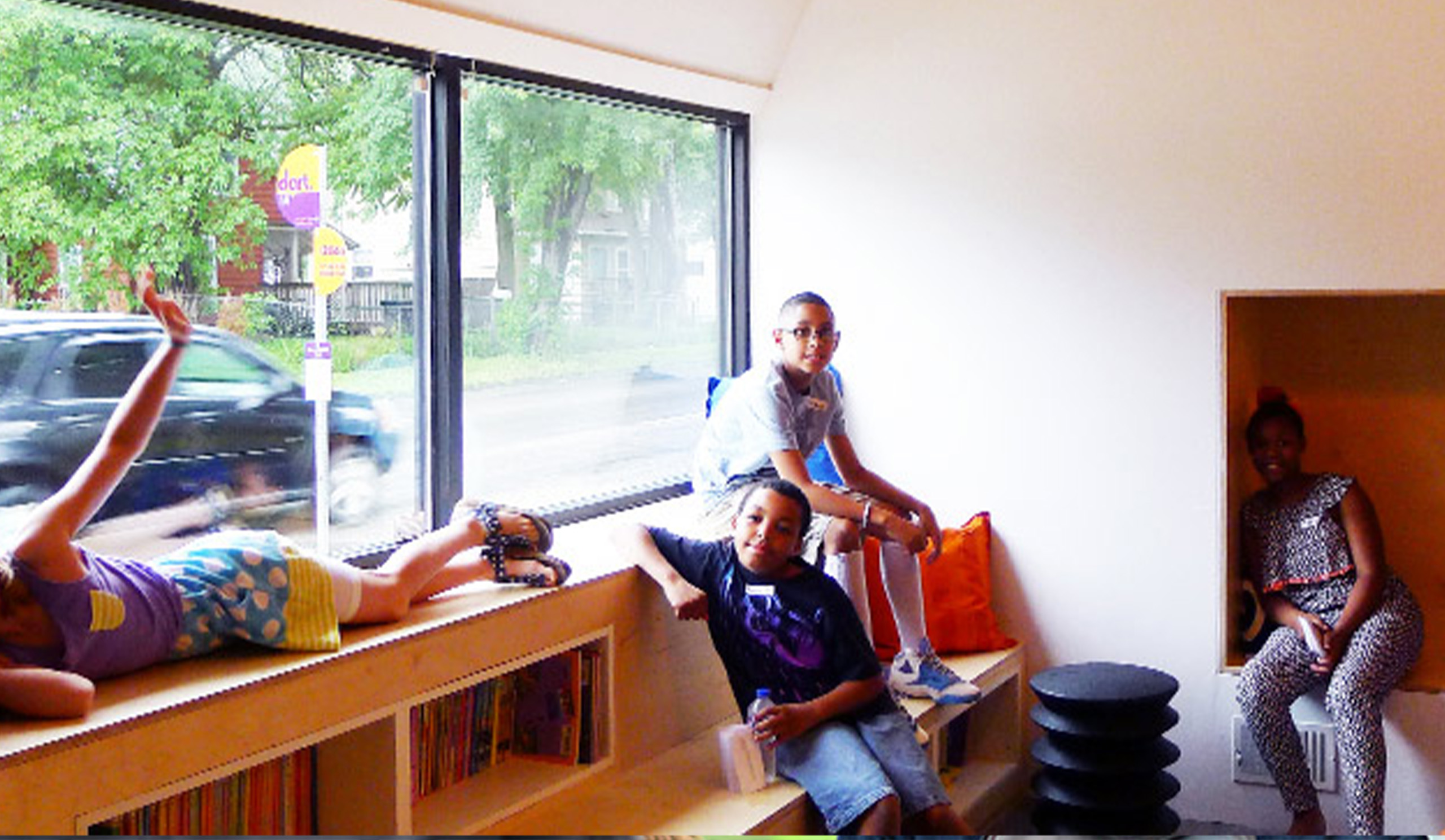
Human-Centered Design for Community Youth Concepts
Sometimes the universe conspires to present a course of action that is so obviously synergistic that it cannot be ignored. BNIM’s engagement with Human-Centered Design is one such occurrence. Synergistic because it ultimately led to the opening of a Youth Enrichment Center in one of Des Moines most underserved communities.
Human-Centered Design (HCD) is a creative approach to problem solving and is promoted by international design and consulting firm, IDEO. This past year, IDEO offered a free online HCD course that was open to teams from around the globe. Members of BNIM enrolled in the class as a team and engaged in multiple classes and activities designed to immerse us in this design methodology.
At the core of the HCD philosophy, what makes it “human-centered,” is the drive to go beyond the functional and the aesthetic to develop the emotional elements of a space. One way that this emotional resonance is brought to the forefront of design is by building empathy with the people that will be using the space. The HCD course introduced methods for building empathy and provided a toolkit for client engagement.
In the second class, teams were asked to choose one of three Design Challenges based on questions established by IDEO to serve as the basis of inspiration, ideation and implementation throughout the remainder of the course. BNIM chose: “How might we enable more young people to become social entrepreneurs?”
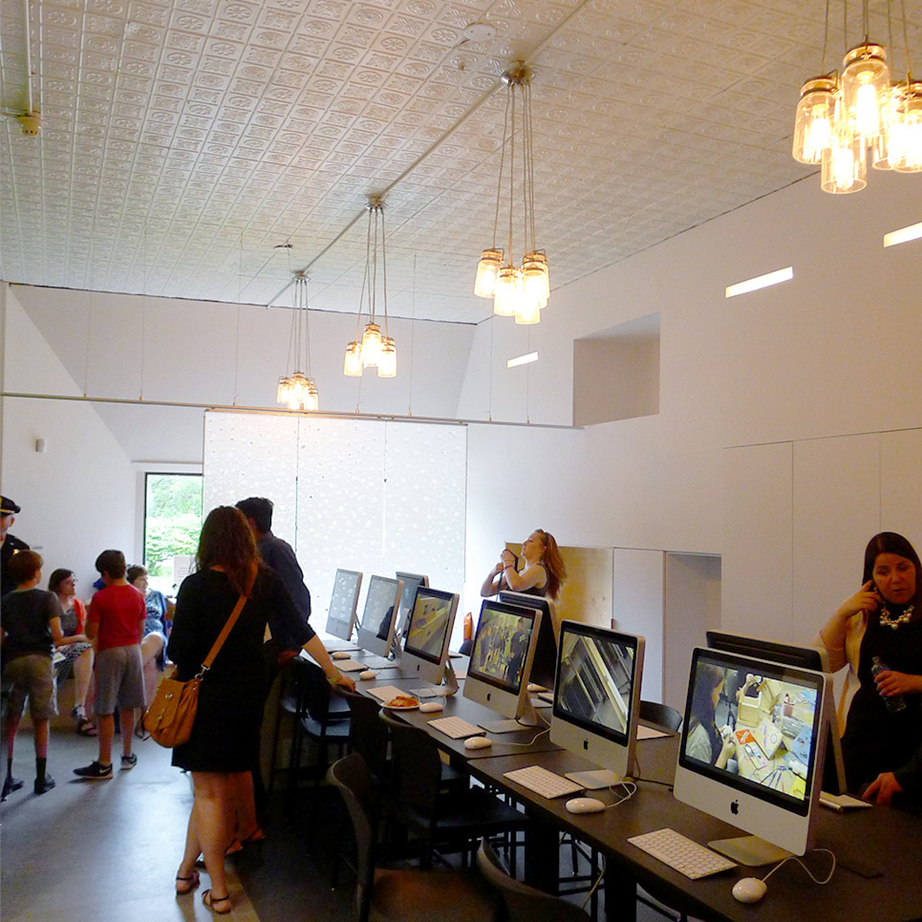
By chance, at the same time we were considering this question, a team from the Greater Des Moines Leadership Institute (GDMLI) approached BNIM looking for assistance in the development of their annual service project — a project to design and implement the renovation of a youth enrichment center for a local non-profit, Community Youth Concepts (CYC).
One of the core missions of CYC is to provide volunteer service opportunities for youth, helping them to become engaged and active in their own communities. These service projects stem directly from the interests of the students and are robust programs that are teaching social entrepreneurialism to these young people.
The alignment of the Human Centered Design curriculum with the mission of Community Youth Concepts was uncanny and we immediately signed on. The HCD coursework had challenged us to find new methods of engagement to discover design solutions that were at the deep foundation of the client’s needs. This meant suspending preconceptions and eschewing common questions of “how big” and “how many” in favor of more open-ended explorations of vision and goals. It also meant engaging as many types of stakeholders as possible in a solution, including the students.
One of the most rewarding and beneficial conversations about the project occurred when our team visited the existing CYC space to engage the students in a brainstorming session. The students, primarily grade school and middle school aged, were encouraged to think and speak freely about their dreams for the new Enrichment Center. BNIM facilitated this process through a combination of sticky notes, whiteboards and model making materials. A key precept of the HCD brainstorming process is to suspend initial judgment of ideas; everything went up on the board, from ice cream machines to hot tubs.
While some of the ideas were fanciful, key concepts rose to the top, leading to more questions and further consideration by the students. Many of these questions, just like the research question BNIM was aswering through the HCD class, began with the phrase “How might we…” How might we create a safe, nurturing environment for youth? How might we encourage kids’ collaboration and creativity? How might we establish a vibrant and visible destination that is a source of community pride? How might the environment itself serve as a learning and teaching tool?
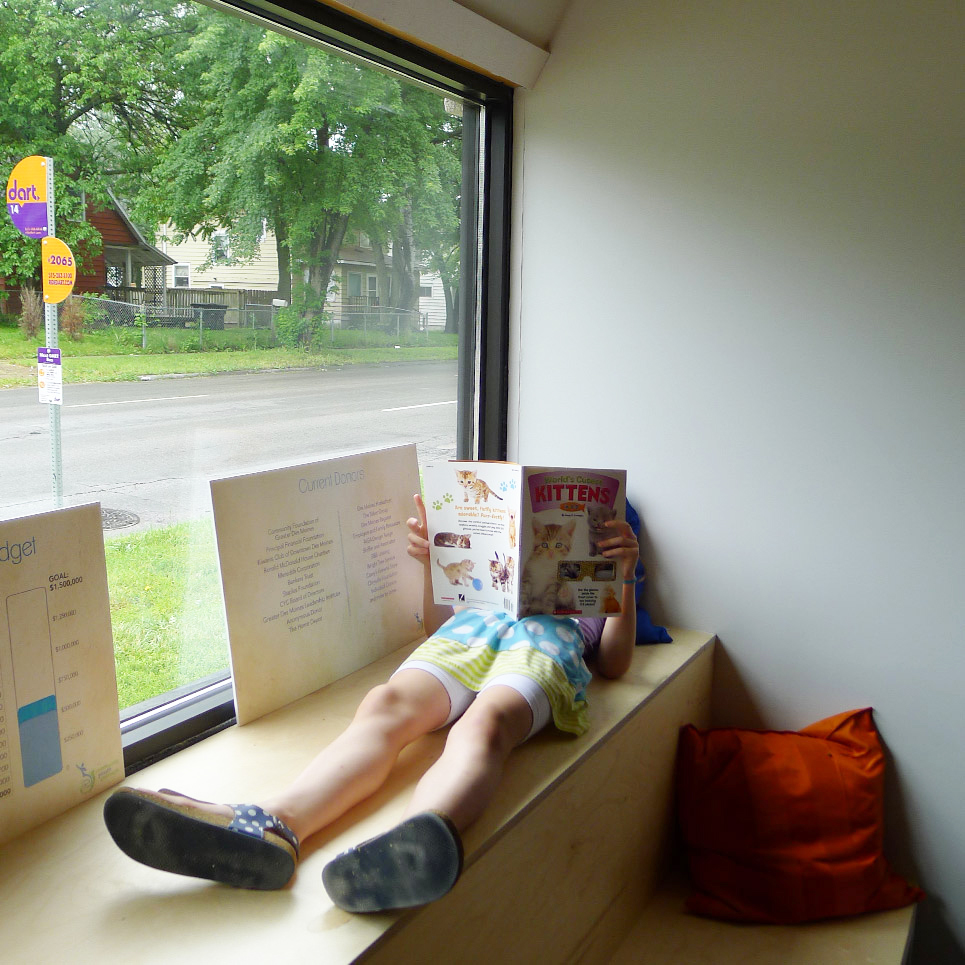
The design that BNIM developed with the students addressed all of these questions and more. The most salient example centered on the notion developed by the students that the space should combine aspects of both math and art, or “MART” as they called it. While the relationship of math and art has been a topic of study for ages, it was exciting to hear how the students conceived of this concept that they were discovering and considering for the first time.
An accessible example of math and art is the Fibonacci Sequence, its close cousin the Golden Rectangle, and the appearance of these formulas in the world of art. BNIM employed numerous instances of these ratios artistically throughout the design as elements of learning in the environment.
The best example of the confluence of math and art developed for CYC exists in the operable screen hanging from the restored tin ceiling. The screen’s material, translucent Plexiglas, is perforated by a pattern following Fermat’s Spiral, which itself is based on the Fibonacci sequence. This basic perforation pattern was then scaled, multiplied and arranged to create a functional work of art. In addition to providing a means to create spatial definition within the larger room, the screen simultaneously creates a visible beacon for the neighborhood while obscuring the computers from passers-by. Further, the screen is a learning and teaching tool that allows circumspection and circumambulation.
The CYC Youth Enrichment Center opened to the public on June 6, 2015 with a well-attended open house that included staff, donors, board members, community leaders and, of course, local youth. The enthusiasm that greeted its reception was indicative of the important need this space fills in the community. It was illustrative of the powerful effect that design can have when it is deeply committed to an emotional connection and grounded in a generous, human centered purpose.
